Mining in Málaga province, Andalucia, during the 19th and 20th centuries and the Marbella Iron Ore Company Limited
By Nick Nutter | Updated 4 Jun 2023 | Andalucia | History |
Login to add to YOUR Favourites or Read Later
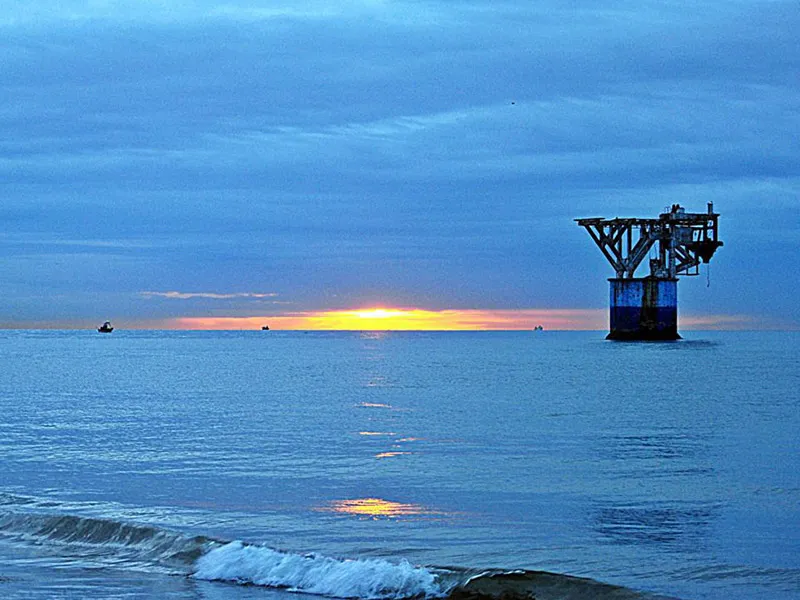
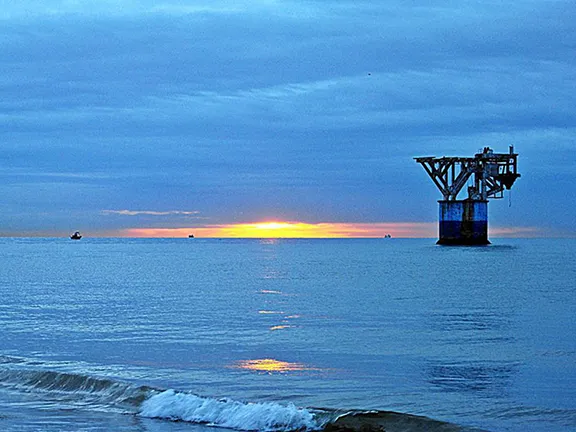
El Cable Marbella
Of the 600 plus registered British mining companies registered in Spain at the end of the 19th century, about 200 of them were in Andalucia. Twelve were located in Málaga province, out of which only one was really successful. This is the story of the Marbella Iron Ore Company Limited.
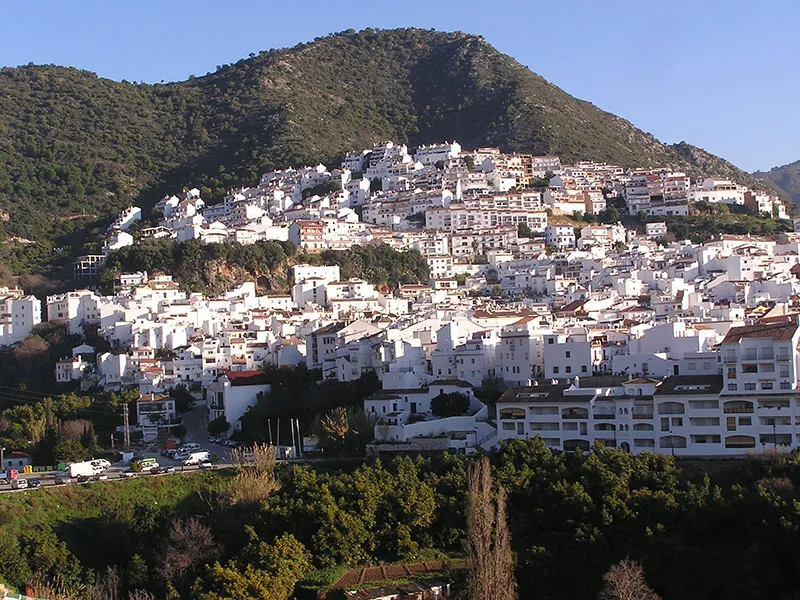
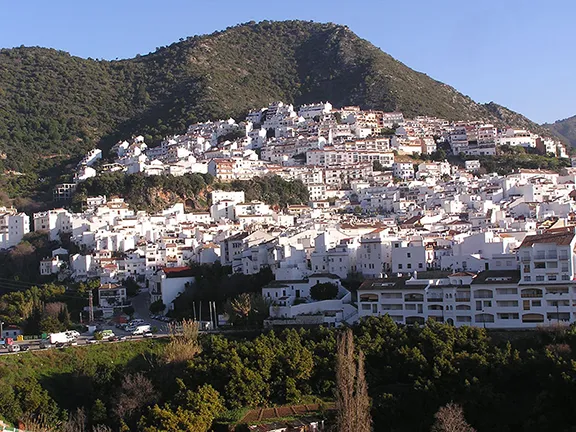
Ojen
The Baetic system of mountains extend from western Andalucia, northeast into Murcia. To the north the Baetic ranges are separated from the Meseta Central and the Sierra Morena by the valley of the Rio Guadalquivir. Both the Baetic system and the Sierra Morena formed as a result of plate tectonics millions of years ago. Both are renowned for the metallic mineral ores to be found in them. Due to a vagary of geology, the different metals are found in different places. A few kilometres north of Marbella, at Ojén, in the southernmost foothills of the Baetic system, is a rich source of magnetite, iron oxide or lodestone.
Magnetite, unlike the other common iron ore, hematite, is difficult to process and, generally speaking, carries a lower concentration of iron. However, that can be offset when magnetite occurs in huge quantities. Kediet ej Jill for example, the highest mountain of Mauritania, is made entirely of the mineral. Whilst not quite as massive, the magnetite deposits at Ojén were considerable.
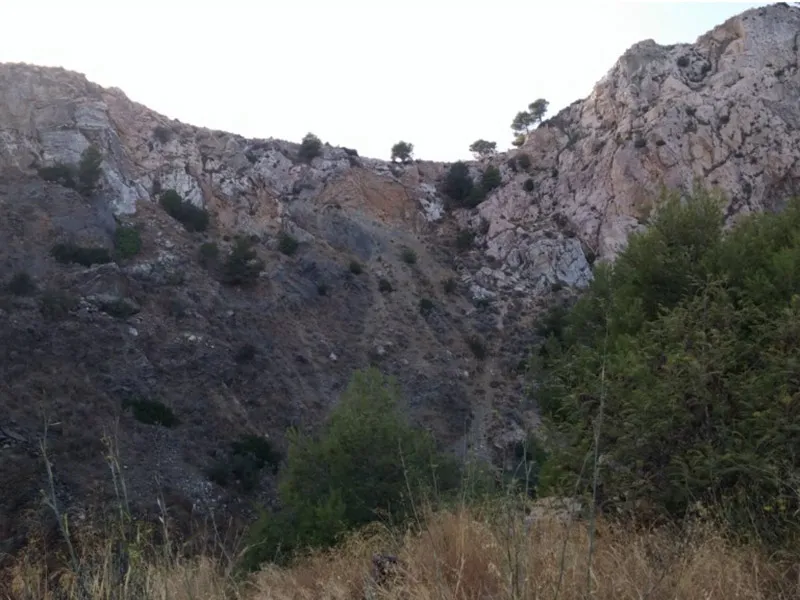
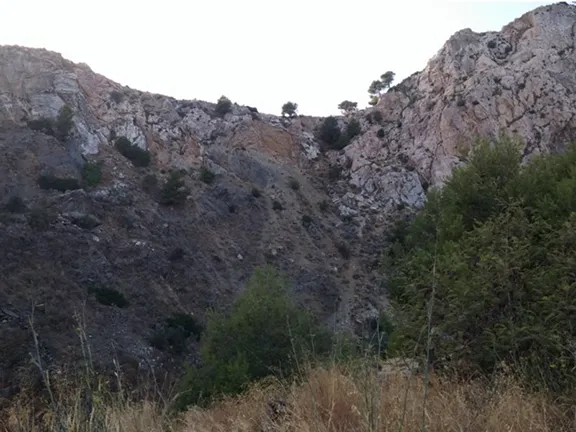
Magnetite
Since the Iron Age, hematite has been the ore of choice for extracting iron. It was not until much later that magnetite was processed. The history of magnetite mining in Málaga province starts in 1828 when Málaga businessman Manuel Heredia founded a company called La Concepción and Joan Giró founded El Angel, to mine the magnetite iron ores. They were attracted to the Marbella area because of the proliferation of pine trees that could be reduced to charcoal and used as fuel in the two blast furnaces that they built at Marbella in 1832. These were the first civilian operated blast furnaces in Spain. After a few years there were six blast furnaces at Marbella that accounted for 75% of the iron smelted in Spain.
Using charcoal in blast furnaces, as opposed to coke, is expensive and the more efficient coke burning furnaces in the north of Spain produced cheaper cast iron that gradually priced the Marbella iron out of the market.
In 1860, the two companies were failing and the Marques de Duero founded an agricultural colony in what is now, San Pedro de Alcantara, just down the coast from Marbella to help find work for those laid off at the mine and factory.
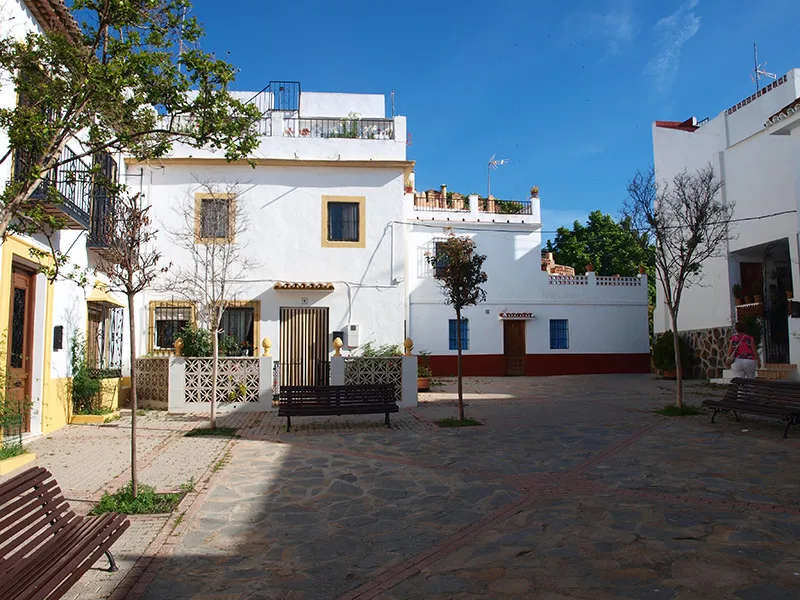
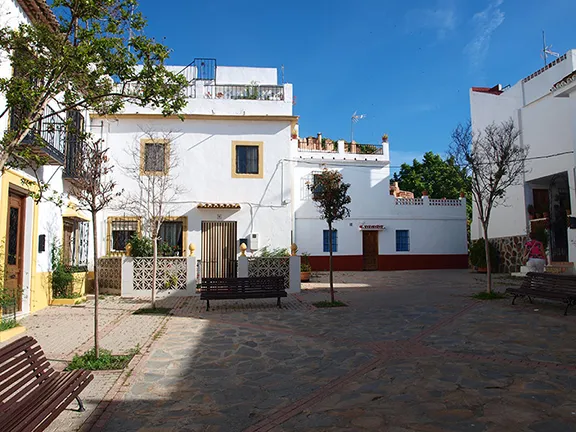
Marbella Old Town
In 1871, two brothers and businessmen from Glasgow, William and Samuel Senythe Malcolm, saw the possibilities of the lode. They formed the Marbella Iron Ore Company Limited, the only one of ten British mining companies in Málaga province to be successful.
The Company bought the concession for the Peñoncillo mine at Ojén and built a railway line to the beach at Marbella where they constructed a pier. The ore was taken from the mines, loaded onto hoppers, taken to the pier and loaded onboard ore carriers for transportation to blast furnaces in the UK. In 1884, the company operated three locomotives and 225 hopper wagons.
In the early 1880s, the mine was producing 30,000 tons of ore each year. Output rose to 100,000 tons by the 1890s and then fell back to 30,000 tons per year. Unlike the mines in the Rio Tinto area, Peñoncillo started as an open cast mine. Frequent landslips forced the company to revert to underground mining after two years, which would have severely restricted output. Company records show that the company barely made profit except during its most prolific years. It did however provide a useful place of work for hundreds of local people. One of those people, the company’s representative in Marbella, Miguel Calzado, was appointed Deputy Consul of Great Britain.
In 1916, the magnetite seam was becoming exhausted and in 1923 a resolution was passed to wind up the company. In 1933 the Marbella Iron Ore Company Limited went into receivership. The pier on Marbella beach was dismantled in 1934, removing the last visible presence of the enterprise apart from a noticeable scar in the Sierra Blanca behind Marbella.
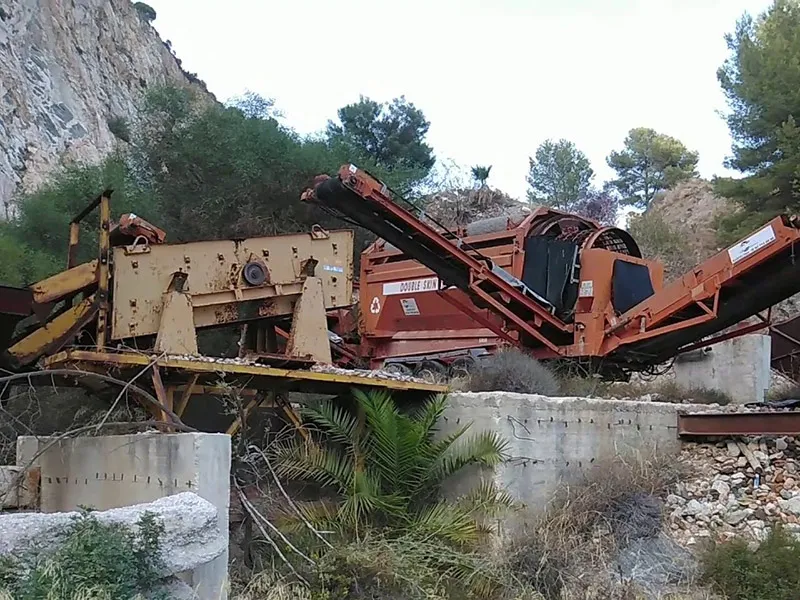
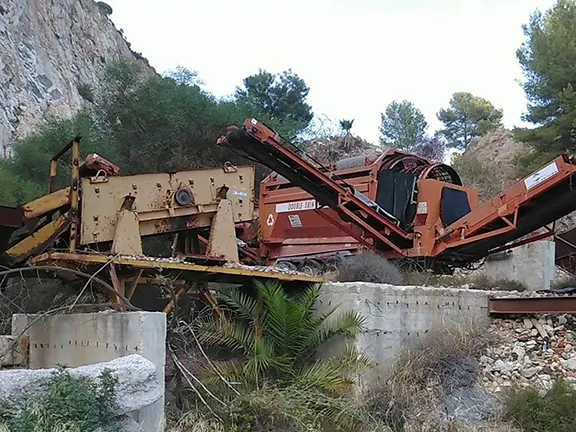
Penoncilla Mine
In 1950, Peñoncillo was reopened by Ferarco SA. Ore was taken to the coast in trucks, transferred to small boats and taken to cargo boats anchored offshore. This costly method of transporting ore was superseded in 1955 when the Dragados y Construcciones company built an aerial runway system from the mine, to the coast at Marbella and then between massive pylon bearing towers that march into the sea off the beach until the buckets carried by the cableway were upended directly into the ship’s holds. The system became known as ‘El Cable Telerifico’. Operations came to a halt in 1970 and all the cable towers were dismantled apart from the one on the beach and two off the beach. In 2005, the cable tower on the beach and the first pylon in the sea were in such a dangerous condition that they were demolished. The third and last cable tower, that has become part of the Marbella skyline, was renovated in 2017. Over the sixty odd years the tower has stood in the sea it has developed its own marine eco-system, making it today a diving venue. The beach gained the name ‘La Playa del Cable’.
Even though Spain was neutral during the First World War, the war caused a number of problems for the mining industry; the cost of raw materials rose, international markets closed, Spain became increasingly protectionist and sterling fell in value. The Armistice was followed by a world depression in the 1920s
The economic problems of the 1914 -1920 period, the failure of some mines and the consolidation of others into one company and the sale of mines to Spanish companies meant that by 1920 there were only fourteen British registered mining companies left in Andalucia with only one of those being in Málaga province.
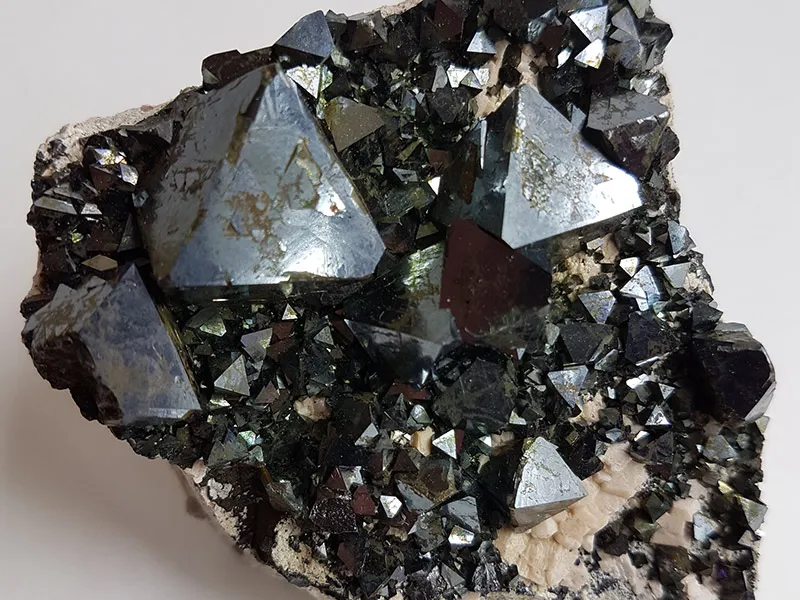
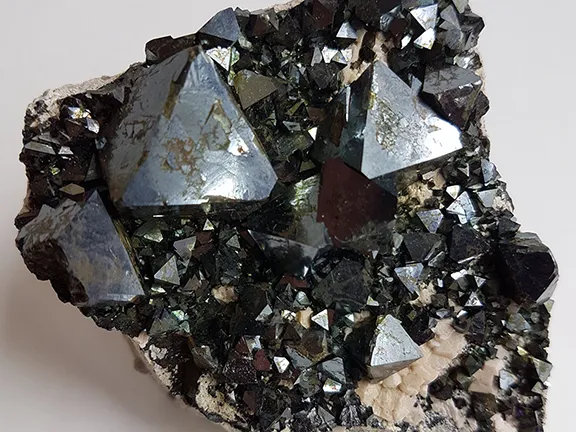
Magnetite Crystals
This is a list of the British registered mining companies that came and went in Málaga province. Some prospered, some never got started. There may well be others missing from the list. I have only included those for which there is conclusive information.
Readers should also note that there is little mention of other foreign influence. The French, German and Belgians were also actively involved in mining and providing the mining infrastructure such as railroads and mining machinery, all areas for future research.
Eldorado Iron Syndicate Ltd Malaga. Registered:1872. Dissolved:1884.
Malaga Lead Company, Ltd. Malaga Registered:1871.
Malaga Mining and Milling Company, Ltd. Registered:1900. Dissolved:1904.
Malaga Mining and Trading Syndicate Ltd. Registered:1907
Malaga Red Oxide Company, Ltd. Registered:1916
Malaga Silver Lead Hills, Ltd Malaga Mayo. Registered:1896 Dissolved:1900. Valderosa-Romero silver-lead mines (Saint George, San Ricardo, San Emilio Pertenencias) - 12 miles south-west of Malaga
Marbella Iron Ore Company, Ltd. Registered:1871
Ojen Mines Ltd, Registered:1911
Ojen Mountain Magnetic Iron Company, Ltd. Registered:1873. Dissolved:1885.
Pluton Mining Company Ltd. Registered:1890. Dissolved:1895
Spanish Talc and Ochre Company Ltd. Registered:1905. Mining property at Ojen and Mijas in Malaga Province.
Spanish Trading Company, Ltd. Registered in 1903 to acquire the undertaking, property and rights of the Malaga Mining and Milling Company, Ltd.
References and further reading
Luque, Javier & Rodas, M. & Galán, Emilio. (1992). Graphite vein mineralization in the ultramafic rocks of southern Spain: Mineralogy and genetic relationships. Mineralium Deposita. 27. 226-233. 10.1007/BF00202547.
Vernon, Robert. (2003). Beyond Huelva: Other British Mining Legacies in Andalucia, Spain.
Vernon, Robert. (2016). English miners in Spain during the 19th century - Mineros ingleses en España durante el siglo 19.
Vernon, Robert. (2017). Database of British Registered Mining Companies formed to acquire, and work mines, in Spain and Portugal.
https://www.vidaenmarbella.com/en-gb/historia-de-marbella